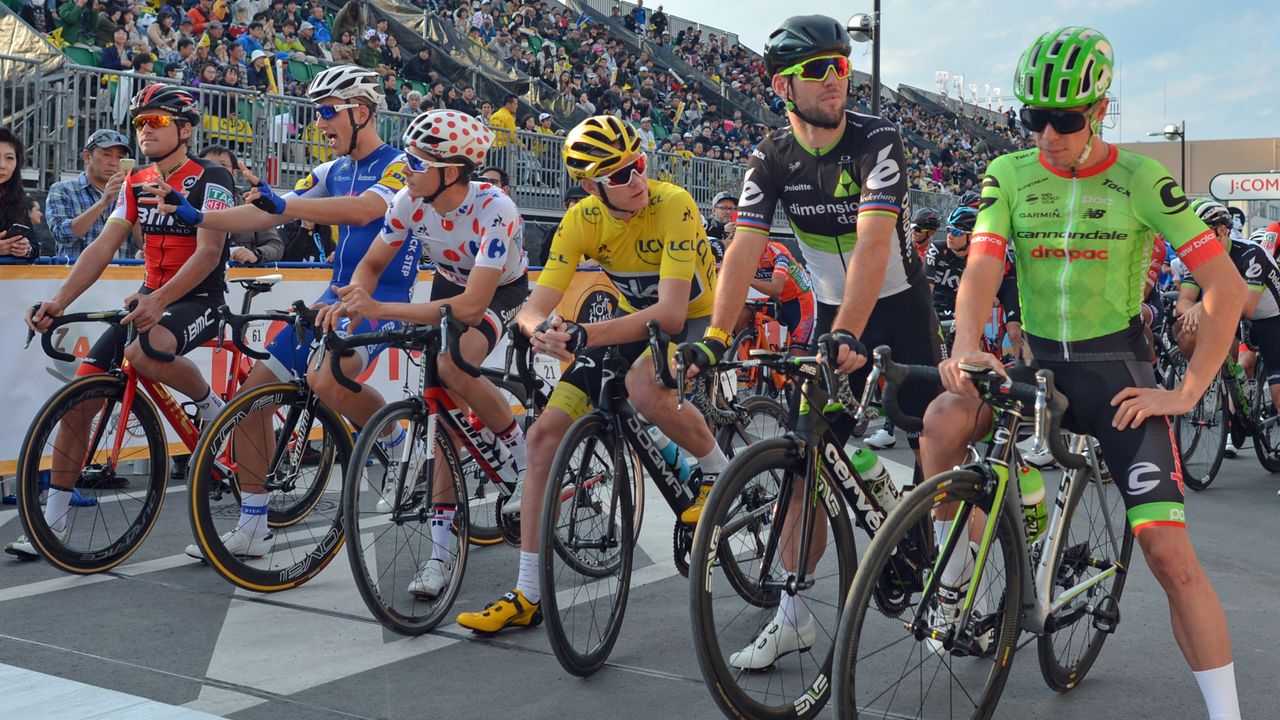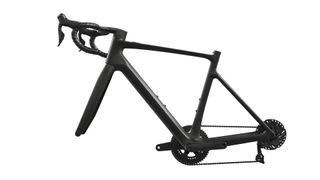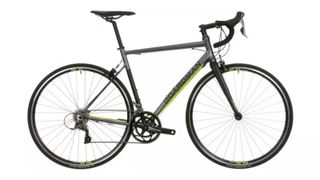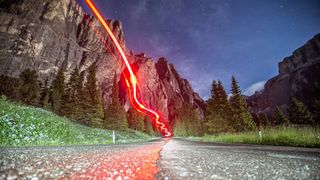
Getting the best road bike for you is a bit of a minefield. There’s the obscure jargon, like semi-compact chainsets and endurance geometry. You’ve also got spec levels to consider and what size you need - not to mention a menu of bike prices which goes from a few hundred pounds to over £10,000.
So here’s what you really need to know about buying the best road bike. Want to know what not to do with your road bike once you've bought it? Read mistakes everyone makes with bikes.
Frame

We’ve another couple of posts talking about what you get at different prices and the differences between an alloy and a carbon frame, so take a look if you want to know more.
But in general, bikes under £1000 will be made of aluminium alloy, bikes over £2000 will be made of carbon fibre and there’s a cross-over between the two in the middle.
A decent frame will make all the difference to your riding, so it’s worth prioritising this and finding one that suits your planned rides. You can always upgrade things like wheels and saddle later, but you’re stuck with your frame.
For a beginner rider, a bike labeled “endurance” is likely to be more comfortable than a racier model, as you’ll sit more upright, with less weight on your arms and upper body, and it will be easier to use the bottom “drops” to the bars. We’ll talk about sizing later.
If you’re going to be riding in all weathers, the option to fit mudguards is a plus - not all bikes come with mudguard fittings or the space for guards. Frame fittings for a rear rack are useful if you’re commuting or planning to carry stuff.
Sign up to the T3 newsletter for smarter living straight to your inbox
Get all the latest news, reviews, deals and buying guides on gorgeous tech, home and active products from the T3 experts
Gears

Bike brands major on gears - what name the “groupset” on the bike has and how many ratios it offers. Most off-the-peg bikes come with Shimano gears. They’ll start off with a groupset with an eight speed rear derailleur, called Claris, and go through nine and ten speeds to 11-speed groupsets, called 105, Ultegra or Dura-Ace. As you move up the spec levels, the gears get lighter in weight and feel easier to operate.
At the front you’ll usually have two chainrings. There are different size options, with the most common being a 50 tooth outer ring and a 34 tooth inner ring. That’s called a “compact chainset”. But you’ll also find “semi-compact” chainsets with 52 and 36 tooth rings, as well as some other options.
Take a look at the spread of the gears at the back, not just the number of different ratios. To make it easier to get up hills, look for a set of gears (the “cassette”) that has a largest sprocket with 30 teeth or more.
Brakes

Road bikes are increasingly moving to disc brakes. They’re more expensive than rim brakes and heavier but give you much more consistent, better stopping power, that’s less affected by the weather. Unlike rim brakes, they won’t wear out your wheel rims.
Disc brakes can be either operated by a cable from the levers or hydraulic. Hydraulic brakes generally work better, but they’re pricier than cable operated mechanical disc brakes.
Your bike may drop in spec of the groupset if you opt for disc brakes, but we’d say that the better braking outweighs that.
Wheels
Lower priced bikes will come with alloy wheels, whereas more expensive bikes will often come with lighter carbon wheels with deeper rims. For all-weather use, alloy is perfectly adequate and if you have opted for rim brakes it will give you better stopping power.
Many cheaper wheels either don’t have any branding or just carry the name of the bike brand. But look out for wheels on more expensive bikes from name brands like Mavic, Fulcrum or DT Swiss, which should be better quality.
Wheels are one of the easiest components of a bike to swap out, if you do decide you want something better and there are a huge number of options from around £100 a pair right up to several thousand pounds. A wheel upgrade is likely to improve the bike’s performance, drop some weight and give you higher quality components and added durability.
Tyres
Tyres on the best road bikes have got increasingly wide over the last few years. So whereas you used to find 23mm tyres on most road bikes, that’s now moved to 25mm with 28mm or wider tyres increasingly common.
Extra tyre width ups ride comfort, as you can drop tyre pressure, and it adds grip. Tread pattern isn’t an issue with road bike tyres, as grip is more down to the quality of the rubber used.
You’ll also increasingly find tubeless tyres and wheels on new bikes. These get rid of inner tubes, replacing them with a sealant that makes the tyre and wheel rim airtight. That means a lot fewer of those pesky punctures and a more comfortable ride.
Make sure both your wheels and tyres are tubeless-ready though before you try to go tubeless, as they need to be compatible for a safe set-up.
Pedals
Most road bikes are sold without pedals, or with cheap plastic ones you can use to try them out. That’s because there are lots of different pedal systems available and they’re not compatible.
If you’re just starting out, a flat pedal might be the best option until you’re confident on the bike. But most road bike riders choose clipped in pedals, where your foot is attached to the bike, as they give better pedalling dynamics and are more efficient and your foot is less likely to slip off the pedal.
These come in either double sided or single sided options and require a set of cycling shoes with holes drilled into their soles to match. Double sided pedals require shoes with two bolt holes. The small cleats on the bottom of the shoes that mesh with the pedals are easier to walk in and it’s easier to get your foot in and out, which can be helpful if you’re riding in town.
Single sided pedals are harder to clip into, but the larger contact area between the shoe and the pedal gives a firmer connection, so they’re preferred by those who want to ride fast. You’ll need a cycling shoe with three bolt holes in the sole to fix the larger cleat.
Other components
The saddle of a road bike is narrow and hard. That’s because you’re sitting on the front of your pelvis, where the bones are narrower and you need a firm support to keep an efficient pedalling position. Women’s saddles are a bit wider to reflect the different anatomy of their sitbones.
It’s worth giving the saddle that comes with your bike a try, but if you find you don’t get on with it, you can buy a decent replacement from £50 or so and it’s pretty easy to swap out.
Most bikes come with round bars with a shallow drop to the bottom of the bars. Some come with oval shaped bars though, that give you a wider hand support which might be a bit more comfortable. Again, it’s pretty easy to upgrade for most bikes. You might improve your comfort with better quality bar tape too.
Fitting
Getting the right size bike for you and getting it set up right is crucial to your cycling enjoyment. Most brands will have a recommended height range on their site for each bike size that they sell, but you also need to get your saddle height and bar position right for you.
It’s something that you can do yourself and a bike shop might give you advice when you’re buying a bike. Many bike shops also offer a bike fitting service. It’ll cost a couple of hundred pounds, but it’s worthwhile to budget for, to reduce aches and pains and the risk of injury.
Clothing and helmet

Don’t forget to budget for cycle clothing and a helmet. The best bike shorts will have a quality foam seat pad which adds to your comfort as you ride. Many roadies prefer bib shorts with shoulder straps, as there’s no waistband to cut into you and they tend to stay up better if you’re swapping from sitting in the saddle to standing on the pedals.
A cycling jersey will be a lot more comfortable than a cotton tee shirt to ride in too, as it will wick sweat away and not get clammy, while cycling mitts may add comfort to your hands and insulated full gloves are essential for winter riding.
You should wear a helmet too. The best cycling helmets start at around £50 and will have been tested to international safety standards. Don’t forget eye protection either. A decent pair of sunnies will keep dust and bugs out of your eyes and complete the pro look.
Lights and parts

The kit list doesn’t stop there. It’s a good idea to run a set of blinkies even in daylight, to up your road presence. They won’t cost the earth and even a cheap set will be rechargeable and have a decent light output and battery life.
If you’re going to be riding at night, you should get a higher powered light set, particularly if you’re using unlit roads, and a backup set is a good idea in case your primary one gives up.
It’s also a good idea to carry a spare inner tube, pump and multitool, so you can fix most problems you might have when out riding and don’t have to call out the sag wagon.
On-going costs
You need to budget to keep your bike running. A bike shop will charge around £100 for an annual service and you’re likely to need new tyres every few thousand miles, costing from £40 to £100 a set. Chains and gear cassettes are the other components that need replacing fairly frequently - they’ll cost anything from £60 up for the parts. Wheels and bearings may need replacing longer term too.
If you’re a competent home mechanic, you can do a lot of the work yourself, but you need specialist tools to replace or adjust many bike parts.
Insurance
Insurance is a worthwhile investment. Bikes and their parts are very nickable (don’t forget to buy a good lock if you’re going to be parking your bike anywhere away from home) and they’re easily damaged.
Insurance may cover you for personal injury and third party liability too.
-
 Philips Hue could be launching its first-ever video doorbell – here's what we know so far
Philips Hue could be launching its first-ever video doorbell – here's what we know so farIt's a logical next step
By Lizzie Wilmot Published
-
 4 arm day mistakes that are killing your muscle gains
4 arm day mistakes that are killing your muscle gainsStruggling to fill out your t-shirt sleeves? An expert says this could be why…
By Bryony Firth-Bernard Published